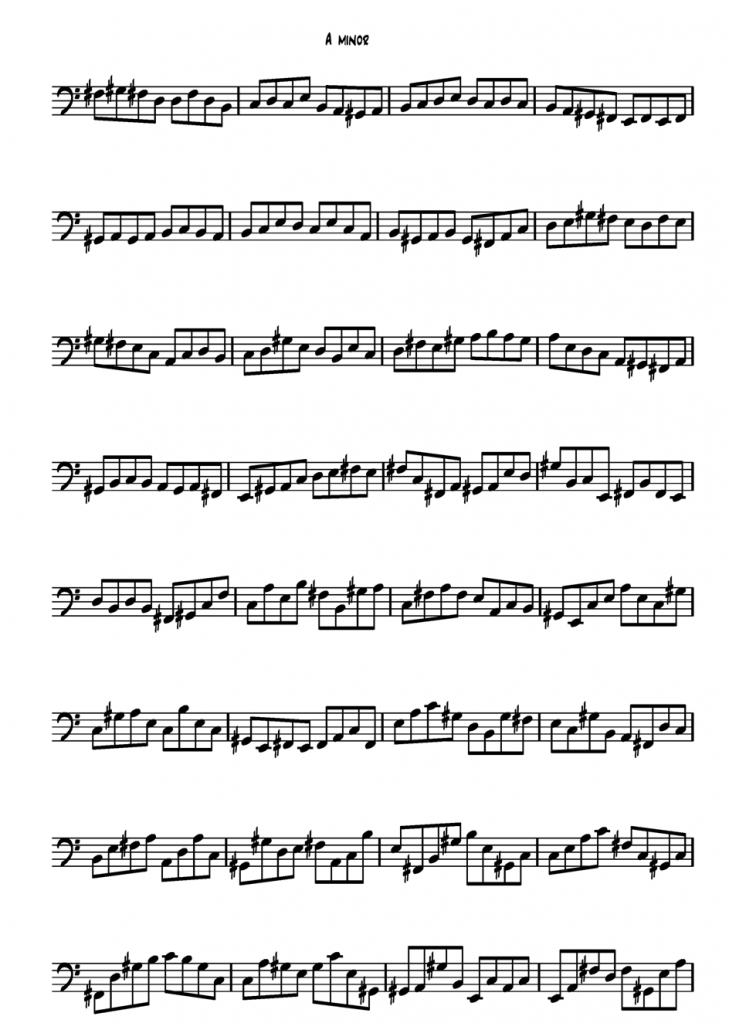Sight Reading Sharps and Flats on Bass
Understanding Sharps and flats on bass is the next stopping point on your journey to reading music on bass guitar.
First, make sure you are ok with part one of this series before moving on.
Most, but not all of the notes on the stave have an extra pitch contained between them. For example the note C# (C sharp) lies between C and D. The note C# is referred to as a chromatic note.
Sharps and flats on bass example 1
As you can see, the note C is notated on the stave with a # (sharp) sign before it. I was recently asked in a lesson, ‘What does hashtag C mean?’. I wasn’t happy.
For our purposes, the note C# is the same as the note Db (D flat).
The notes C# and Db are referred to as enharmonic which is a complex way to say that two notes can have the same name.
In music, the notes which are enharmonic are
C# and Db
D# and Eb
F# and Gb
G# and Ab
A# and Bb
They look like this on the stave:
Sharps and flats on bass example 2
Each pair of two notes sounds identical.
Sharps and flats occur regularly in music and are used to alter some of the notes in a melody, or todesignate which key we are playing in.
Look at this example:
Sharps and flats on bass example 3
You can see the sharps occurring frequently throughout the example. When we come across sharps or flats we simply play the altered note instead of the original.
Read through the following example. To refresh your memory, the notes on the bass are here:
Sharps and flats on bass example 4
Instead of saying ‘F’ in the second bar, say ‘F Sharp’. This is the note you would play on your instrument.
Here is an example with a flat (b):
Sharps and flats on bass example 5
In the first bar you would say and play the note Bb instead of the note B.
These two examples show how we treat sharps and flats when they crop up in the score occasionally. However, another way sharps and flats are used is to define the musical key of the music.
This isn’t a theory book so this explanation will be brief, but by using certain, simple combinations of sharps or flats at the beginning of the piece of music, we can indicate what key the music is in.
For example, by writing an F# at the beginning of the music we have defined the key as G major. For more information on how sharps and flats define key signatures, check out The Practical Guide to Modern Music Theory For Guitarists.
This key signature looks like this:
Sharps and flats on bass example 6
What this means for us as sight readers is that every time we see an F in the music, we play an F# instead. This F# is not only played on the specific line it is written on, it affects every F in the piece of music unless we’re told otherwise.
The notes in the following example are:
Sharps and flats on bass example 7
In the following example, all the B notes will be played as Bbs because of the Bb in the key signature:
Sharps and flats on bass example 8
This is the key signature for the key of F major.
It is always up to us as readers to take notice of the sharps or flats in the key signature, and remember to apply them to every note they affect.
Want to learn Sight Reading on Bass the right way?
Check out our best-selling book Sight Reading Mastery for Bass Guitar:
“The artists you work with, and the quality of your work speaks for itself.”
Tommy Emmanuel
© Copyright Fundamental Changes Ltd 2025
No.6 The Pound, Ampney Crucis, England, GL7 5SA










